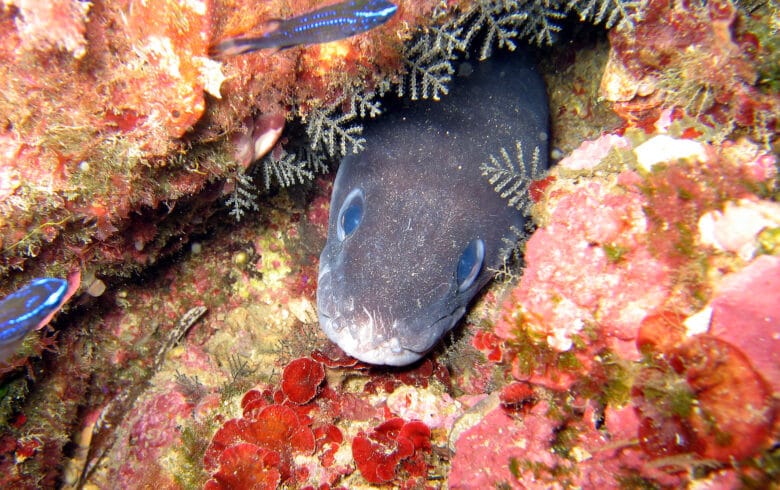
Did you know ?
The conger eel spends most of the day in its hole, only coming out at night to hunt. Larger individuals can be aggressive and may attack scuba divers.
The smooth, snake-like body of the conger eel has no scales and can be up to 3 metres long! It has a rounded snout and its upper jaw protrudes over the lower jaw. Its dorsal, caudal and anal fins are confluent. Its body can be light or dark grey with a white border on the fins. Conger eels feed on fish, crustaceans and cephalopods and live in crevices on rocky bottoms, in wrecks and on sandy bottoms down to depths of 100m. They can be found in the Mediterranean including the western part of the Black Sea, and from Norway to Senegal in the Atlantic.
Phylum: Vertebrates
Class: Osteichthyes
Order: Anguilliformes
Family: Congridae
Scientific name: Conger conger
French: Congre
Spanish: Congrio
Italian: Grongo
German: Meeraal






















